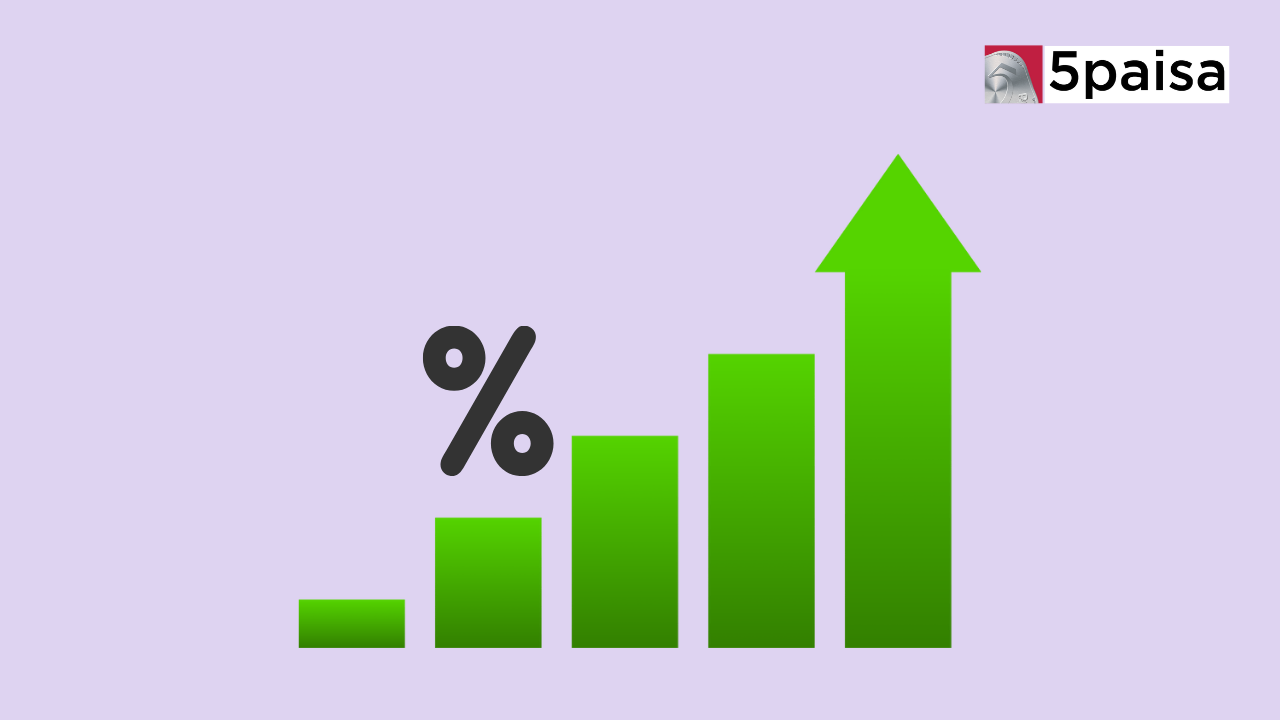Top Growth Stocks Trading at a Discount
Top Cash Rich Low PE stocks to Invest

Last Updated: 7th September 2023 - 05:09 pm
Why Invest in Cash-Rich Stocks?
Investing in cash-rich stocks with low Price-to-Earnings (P/E) ratios can offer a range of benefits for savvy investors. These stocks, often referred to as value stocks, possess several attractive qualities that can potentially lead to substantial returns and minimized risk.
• Safety Net During Volatile Times: Companies with substantial cash reserves are better equipped to weather economic downturns and market volatility. Cash acts as a cushion, allowing companies to continue their operations and invest in growth even when times are tough.
• Potential for Strong Capital Appreciation: Cash-rich companies often have the flexibility to invest in strategic opportunities, whether it's through acquisitions, R&D, or market expansion. These investments can lead to increased revenue and ultimately drive stock price appreciation.
• Dividend Payments: Cash-rich companies are more likely to pay dividends to their shareholders. This not only provides a steady stream of income but also indicates management's confidence in the company's financial health and growth prospects.
• Value Investing: Low P/E ratios suggest that a company's stock is trading at a lower price relative to its earnings. This presents an opportunity for value investors to purchase stocks at a discount compared to their intrinsic value.
• Higher Return on Capital Employed (ROCE): Cash-rich companies can generate higher returns on their invested capital, as they have the financial resources to fund profitable projects that yield substantial returns.
Considerations Before Investing in Cash-Rich Stocks
While cash-rich stocks may offer compelling opportunities, it's crucial to approach your investment decisions with careful consideration and due diligence. Here are some factors to keep in mind:
• Quality of Earnings: Analyze the source of a company's earnings. Sustainable earnings are more reliable indicators of long-term growth potential than one-time gains or exceptional events.
Debt Levels: Even though a company may have a healthy cash position, it's important to assess its debt levels. High debt can offset the benefits of cash reserves and lead to financial strain.
• Management Efficiency: Evaluate how efficiently the company's management deploys its cash reserves. Companies that generate strong returns on invested capital are more likely to translate cash into value for shareholders.
• Industry Trends: Consider the industry the company operates in. A company with a strong cash position in a declining industry might not be as appealing as one in a growing sector.
• Competitive Advantage: Investigate the company's competitive position in the market. A strong moat, innovative products, or a unique market position can help ensure sustained growth.
• Dividend Policies: If dividend income is important to you, review the company's history of dividend payments, dividend growth, and sustainability.
• Valuation: While low P/E ratios can indicate undervaluation, it's important to compare a company's P/E ratio to its historical average, its peers in the industry, and the overall market.
• Long-Term Outlook: Consider your investment horizon. Cash-rich stocks might not provide quick gains, but they could offer solid returns over the long term.
• Diversification: As with any investment strategy, diversification is key. Invest in a variety of cash-rich stocks across different industries to spread risk.
Investing in cash-rich stocks with low P/E ratios requires a balanced approach that combines financial analysis, market research, and a long-term perspective. By understanding the qualities that make these stocks attractive and conducting thorough research, investors can potentially capitalize on hidden value and position themselves for success in the market.
Methodology
1. Company has reserves more than 25000
2. Company’s Price to earning less than 15
3. Company’s Return on capital employed more than 22%
Overview of the Best Cash rich stocks with low Price to Earnings
1. Vedanta
Vedanta Ltd is a company that deals with different kinds of natural resources. They find, dig out, and process things like minerals and oil & gas from the ground. This company works with materials like zinc, lead, silver, copper, aluminium, iron ore, and oil & gas. They are active in places like India, South Africa, Namibia, Ireland, Liberia, and UAE.
Vedanta also does other things. They make electricity for sale, create steel, and run ports in India. They also make a special type of glass material in South Korea and Taiwan
Revenue Distribution
Key Operational Highlights
• Market Leadership in Nickel and Cobalt Production: Vedanta's acquisition of a Nickel and Cobalt plant in Goa has positioned it as the sole producer of Nickel in India.
• Diversified Commodity Operations: Vedanta's operations span various commodities, including refined zinc, lead, silver, aluminium, oil & gas, iron ore, and more.
• Geographical Presence: The company has a widespread presence across India, Namibia, South Africa, UAE, Australia, and Ireland.
• Reserves and Resources: Vedanta possesses significant reserves, including zinc in India and internationally, as well as substantial oil & gas reserves.
• Industry Dominance: Through its subsidiary Hindustan Zinc Ltd (HZL), Vedanta holds a major stake in India's primary zinc production, securing a notable market share.
Financial Highlights
• Production Volumes: In FY22, Vedanta demonstrated strong production volumes across various segments, including refined zinc, lead, silver, aluminium, iron ore, and more.
Oil & Gas Leadership: Vedanta stands as India's largest private sector crude oil producer, contributing significantly to the country's total crude oil production.
• Aluminium Business Dominance: Vedanta's substantial aluminium installed capacity in India makes it a leading player, with a significant market share among primary producers.
• Power Generation: The company's flagship power project, Talwandi Sabo Power Ltd (TSPL), located in Punjab, plays a vital role in power generation.
• Iron Ore Mining: Vedanta is among India's largest merchant iron-ore miners, with operations in Goa and Karnataka, despite the temporary suspension in Goa due to regulatory directives.
Key Risks
• Commodity Price Volatility: The company is exposed to fluctuations in commodity prices, impacting its profitability and financial performance.
• Debt Levels: Despite strong operational performance, Vedanta's increasing debt levels raise concerns over financial stability and future growth prospects.
• Regulatory and Legal Challenges: Regulatory directives and legal proceedings, such as the suspension of iron ore mining in Goa, can significantly impact operations.
• Market Demand Fluctuations: Vedanta's performance is influenced by market demand for its products, which can be affected by global economic trends.
• Global Economic Factors: The company's operations and profitability are susceptible to changes in global economic conditions, which may impact demand and prices.
Outlook
• Capacity Expansion Plans: Vedanta's strategic plans include capacity expansion in various segments, including aluminium, alumina, coal mining, and iron ore mining.
• Coal Security and Integration: Operationalizing new coal mines will enhance Vedanta's coal security and bolster its operational capabilities.
• Commodity Price Trends: The company's performance is subject to ongoing trends in commodity prices, especially for aluminium and zinc
• Renewable Power Investments: Vedanta's focus on renewable power investments showcases its commitment to sustainable and green energy solutions.
• Financial Discipline and Debt Management: Vedanta's efforts to manage debt and maintain financial discipline will be crucial in achieving stability and future growth.
|
Key Financial Metrics |
Key Financial Metrics |
|
Face Value (₹) |
1 |
|
Market Cap (Cr) |
86,759 |
|
EPS (₹) |
28.45 |
|
Stock P/E (TTM) |
11.7 |
|
Dividend Yield (%) |
43.5 |
|
ROE (%) |
23.8 |
|
Net Profit Margin(%) |
5.53 |
|
Debt to Equity |
1.69 |
|
Compounded Profit Growth (10 yr) (%) |
17 |
|
Promoter’s Holdings (%) |
68.11 |
|
ROCE % |
24 |
Vedanta Share Price
2. Oil India
Oil India Ltd is involved in the process of finding, developing, and extracting crude oil and natural gas. The company also handles the transportation of crude oil and the production of LPG. Additionally, Oil India provides a range of services related to exploration and production for oil blocks.
Key Operational Highlights
• Revenue Breakdown: Crude oil sales contribute approximately 76% of Oil India's revenues, followed by natural gas at around 18%, transportation (pipeline) at roughly 3%, and other sources contributing 3%.
• Global Footprint: The company's presence spans 60 blocks within India and 12 blocks in various overseas countries such as the US, Nigeria, Venezuela, Russia, and Bangladesh. Its 2P reserves, as of March 2020, consist of about 75 million metric tonnes of crude oil and approximately 60 billion cubic meters of natural gas. Overseas, its 2P reserves include approximately 25 million metric tonnes of crude oil and around 22.5 billion cubic meters of natural gas.
• Production Volumes: Over the FY16-20 period, Oil India has maintained an average annual production of around 3.27 million metric tonnes of crude oil and about 2,870 million meter standard cubic meters of natural gas.
• Significance of Assam: Assam plays a crucial role in Oil India's domestic operations, accounting for nearly 98.5% of total proven domestic reserves and approximately 98% of total crude oil production.
• Pipeline Infrastructure: The company operates a substantial pipeline network with approximately 1,150 km dedicated to crude oil and 660 km for multi-products. It also holds a 23% equity stake in DNP Ltd., which operates a 192 km natural gas pipeline in Assam.
Financial Highlights
• Capital Allocation Strategy: Oil India's capital expenditure approach has maintained an average spending range of INR 3,800-4,300 crores in recent years. Allocation distribution includes around 25% for development drilling, about 22% for exploration drilling, roughly 24% for capital equipment, approximately 12% for overseas projects, and about 15% for surveys and research and development.
• Stake in IOCL: The company holds an approximate 5% stake in Indian Oil Corporation Ltd.
NRL Acquisition: With a 26% stake in Numaligarh Refinery Ltd., Oil India operates a 3 MnTPA refinery in Numaligarh, Assam. The strategic acquisition of BPCL's stake further strengthens the company's position and crude oil supply.
• Historical Evolution: Originally established in 1889 as Burma Oil Company Ltd, the company transitioned into a wholly-owned government enterprise in 1981. Its IPO was launched in 2009, and currently, the Government of India holds around 57% stake, while major oil marketing companies (IOCL, BPCL, and HPCL) collectively hold about 10% stake.
• FY23 Performance: Oil India's FY23 performance was driven by higher realizations. It targets a 4% CAGR growth in oil and gas production over FY23-25E. Attractive valuations, RoE, and dividend yield present investment potential, balanced by factors such as the windfall tax and gas price decline.
Key Risks
• Commodity Price Volatility: Fluctuations in crude oil and natural gas prices can impact Oil India's revenue and profitability, affecting its financial stability.
• Regulatory Environment: Changes in government policies, regulations, and taxation related to the oil and gas sector can have a direct impact on Oil India's operations and financial results.
• Operational Challenges: Exploration, drilling, and production activities are subject to technical and operational risks, including geological uncertainties, well performance, and equipment reliability.
• Environmental and Social Factors: Environmental regulations and social expectations related to sustainable practices in the oil and gas industry can impact Oil India's operations and project approvals.
• Global Economic Factors: Economic conditions, both domestically and globally, can influence demand for oil and gas products, thereby affecting Oil India's revenue and profitability.
Outlook
Oil India remains strategically positioned with a diverse portfolio and a significant presence in key segments of the oil and gas industry. While maintaining operational resilience, the company is exposed to various external factors, including commodity price dynamics and regulatory changes. Its future performance hinges on the global energy demand trajectory and the evolving landscape of energy policies and technologies.
|
Key Financial Metrics |
FY'23 |
|
Face Value (₹) |
10 |
|
Market Cap (Cr) |
31,204 |
|
EPS (₹) |
80.49 |
|
Stock P/E (TTM) |
4.26 |
|
Dividend Yield (%) |
6.96 |
|
ROE (%) |
25.3 |
|
Net Profit Margin(%) |
22.62 |
|
Debt to Equity |
0.49 |
|
Compounded Profit Growth (10 yr) (%) |
14 |
|
Promoter’s Holdings (%) |
56.66 |
|
ROCE % |
27 |
Oil India Share Price
3. Coal India
Coal India Ltd primarily focuses on the extraction and manufacturing of coal, while also managing coal washeries. Its primary customer base consists of the power and steel industries, with additional clients spanning sectors such as cement, fertilizers, and brick kilns.
Key Operational Highlights
• Revenue Composition: Currently, crude oil sales contribute around 76% of the total revenue, followed by natural gas (18%), transportation through pipelines (approximately 3%), and other sources (3%).
• Diverse Oil Blocks: The company holds ownership in 60 blocks within India and an additional 12 blocks in overseas locations including the US, Nigeria, Venezuela, Russia, and Bangladesh. These blocks encompass a substantial reserve potential.
• Reserve Strength: As of March 2020, Oil India possesses substantial proven and probable reserves, amounting to approximately 75 million metric tonnes (MMT) of crude oil and 60 billion cubic meters (BCM) of natural gas within India. Internationally, it holds 2P reserves of around 25 MMT of crude oil and 22.5 BCM of natural gas.
• Production Average: Over the period from FY16 to FY20, the company has maintained an average annual production of approximately 3.27 million metric tonnes of crude oil and 2870 million meter standard cubic meters of natural gas.
• Significance of Assam: Assam stands out as a crucial state for the company's domestic operations, housing nearly 98.5% of the total proven domestic reserves and accounting for approximately 98% of the overall crude oil production.
Financial Highlights
• Profit Growth: In Q1 FY '24, Oil India's profit after tax reported a growth of 3.5% compared to the same period in the previous year, demonstrating resilience in challenging market conditions.
• Revenue Downturn: The company's consolidated turnover declined by around 22.12% in Q1 FY '24 compared to the corresponding period last year, indicating potential challenges in the revenue generation aspect.
• Positive Production Trend: During the recent quarter, crude oil production showcased a growth of 5% on a quarter-to-quarter basis, reflecting the company's operational effectiveness.
• Refinery Performance: Numaligarh Refinery Limited (NRL), in which Oil India holds a significant stake, faced challenges with a loss of INR 77.56 crores due to a shutdown. Despite this, the refinery aims to complete its expansion to 9 million tons by March 2026.
• Capital Expenditure: The company has maintained an average annual capital expenditure range of INR 3,800-4,300 crores, with strategic allocations across development drilling, exploration drilling, capital equipment, overseas projects, and research and development.
Key Risks
• Offtake Challenges: The company encountered issues affecting natural gas production due to challenges related to offtake, potentially impacting revenue streams.
• Refinery Disruptions: Operational disruptions and shutdowns at refineries, such as the one experienced by NRL, could lead to financial losses and impact overall performance.
• Debt Exposure: Oil India's consolidated debt, standing at around $1,355 million on a standalone basis and INR 18,000 crores on a consolidated basis, warrants prudent management to avoid undue financial strain.
• Additional Liabilities: The absence of provisions for additional liabilities related to incidents like Baghjan indicates potential financial uncertainties pending the recommendations of committees, which could influence the company's financial position.
• Market Volatility: The energy market's inherent volatility, influenced by factors like geopolitical events and fluctuating global demand, poses risks to the company's revenue and profitability.
Outlook
The company's outlook remains focused on maintaining and enhancing its operational efficiency in the production of crude oil and natural gas. Efforts to navigate challenges, capitalize on growth opportunities, and prudently manage capital allocation are expected to play a vital role in sustaining the company's performance. Moreover, strategic investments in refinery expansion and adherence to regulatory considerations will likely shape its trajectory in the coming quarters.
|
Key Financial Metrics |
FY'23 |
|
Face Value (₹) |
10 |
|
Market Cap (Cr) |
1,40,171 |
|
EPS (₹) |
45.7 |
|
Stock P/E (TTM) |
5.15 |
|
Dividend Yield (%) |
10.7 |
|
ROE (%) |
56.0 |
|
Net Profit Margin(%) |
22.07 |
|
Debt to Equity |
0.08 |
|
Compounded Profit Growth (10 yr) (%) |
7 |
|
Promoter’s Holdings (%) |
63.13 |
|
ROCE % |
71 |
Coal India Share Price
Trending on 5paisa
Discover more of what matters to you.
Indian Stock Market Related Articles
Disclaimer: Investment in securities market are subject to market risks, read all the related documents carefully before investing. For detailed disclaimer please Click here.
 5paisa Research Team
5paisa Research Team Sachin Gupta
Sachin Gupta




